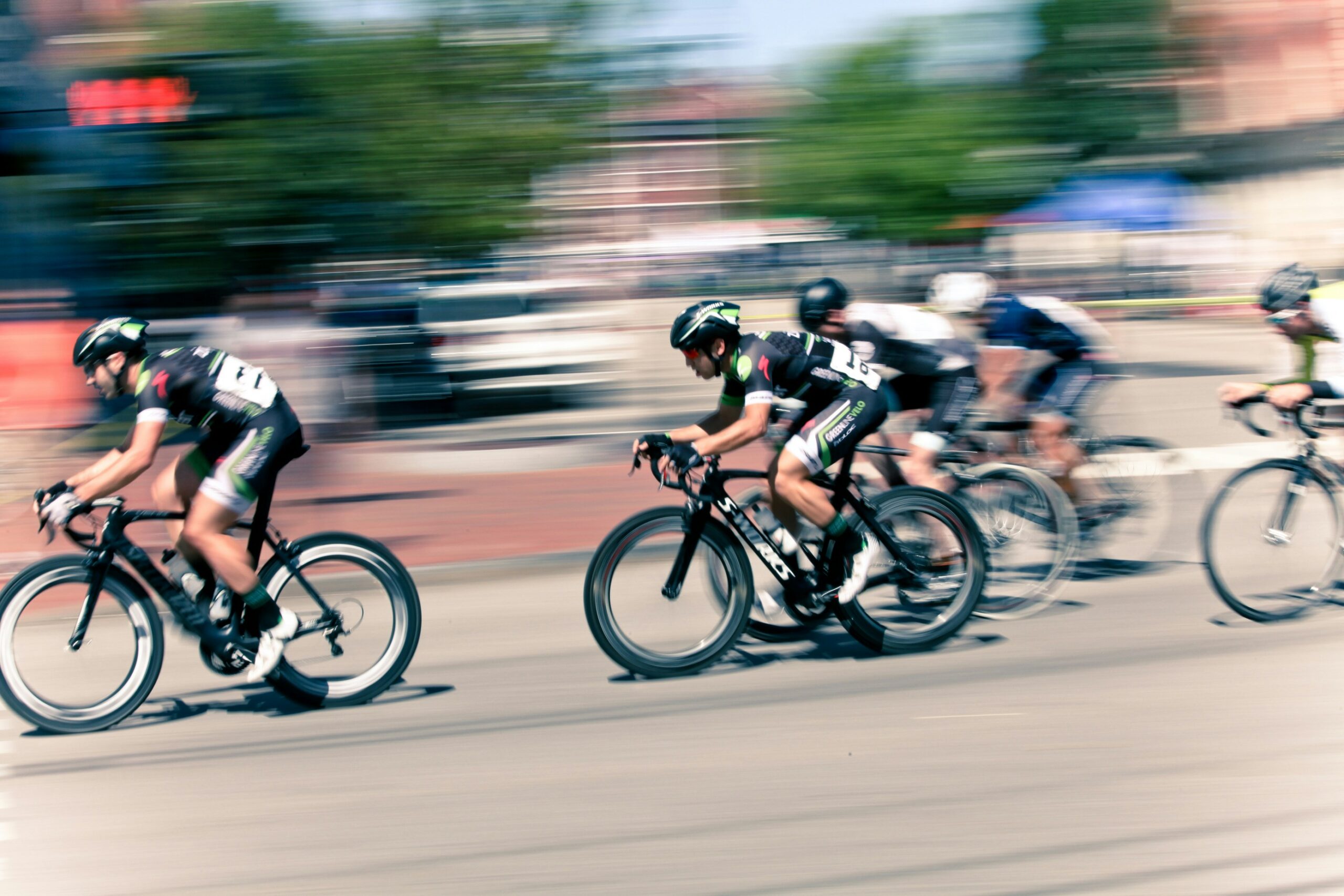Imagine a tiny, curious creature dwelling deep within your body, constantly on the move. Now, shift your attention to an equally fascinating organ that has puzzled scientists and individuals alike for years: the prostate. This enigma of a gland has sparked countless debates about whether it remains still or possesses the ability to glide and slide within its cozy abode. So, let's embark on a journey to unravel the secrets of the prostate's mobility, and discover whether it truly stays put or ventures into uncharted territories within the body.
Understanding the Prostate
The prostate, a small gland found in the male reproductive system, plays a vital role in overall health. To fully comprehend its significance, it is essential to understand its location and size, as well as its function and how it changes over a person's lifespan.
The Location and Size of the Prostate
The prostate is situated just below the bladder, surrounding the urethra, which carries urine from the bladder out of the body. It is approximately the size of a walnut, ranging in dimensions from around 1.5 inches to 2 inches in length.
The Function of the Prostate
The primary function of the prostate is to produce a fluid that nourishes and protects sperm. This fluid, called prostate fluid, is a key component of semen, which is ejaculated during sexual activity. Additionally, the prostate also helps control the flow of urine by contracting and releasing its muscles to open and close off the urethra.
How the Prostate Changes Over a Person's Lifespan
Throughout a person's life, the prostate goes through various changes. During puberty, the prostate begins to grow, and by the time a person reaches adulthood, it is fully developed. However, as men age, the prostate has a tendency to enlarge, typically due to a condition called benign prostatic hyperplasia (BPH). This enlargement is not cancerous but can cause urinary symptoms and impact prostate movement.
Prostate Movement: The Basic Picture
To better grasp the concept of prostate movement, it is important to understand how and why the prostate can change positions within the body.
Conceptual Understanding of Prostate Movement
The prostate, although generally seen as stationary, has some degree of mobility. This movement is primarily facilitated by the surrounding muscles, ligaments, and tissues, which provide support and allow the prostate to adjust its position during certain activities.
Factors Contributing to the Mobility of the Prostate
Several factors contribute to the mobility of the prostate. The elasticity and flexibility of the surrounding tissues, the tone of the pelvic floor muscles, and the position of neighboring organs all play a role in enabling the prostate to move within the body.
Prostate Movement During Bowel Movements
One notable instance of prostate movement occurs during bowel movements. The pelvic floor muscles contract during fecal expulsion, which puts pressure on the prostate gland, causing it to shift slightly. This movement helps facilitate the passage of stool and aids in maintaining prostate health.

Prostate and Sexual Activity
Sexual activity can also influence the movement of the prostate. Understanding how the prostate moves during sexual arousal and the effects of sexual activity on its position is crucial for a comprehensive understanding of the prostate's role in sexual health.
Movements of the Prostate During Sexual Arousal
During sexual arousal, the prostate undergoes both physical and chemical changes. The blood vessels in the prostate dilate, leading to increased blood flow and the accumulation of prostatic fluid. As a result, the prostate swells and may shift slightly in position, enhancing sexual pleasure and aiding in the transport of sperm during ejaculation.
Effects of Sexual Activity on Prostate Position
Regular sexual activity can help maintain the health of the prostate. The contractions and pulsations that occur during ejaculation can further promote prostate movement, facilitating the release of prostatic fluid and potentially reducing the risk of fluid buildup and inflammation.
Role of Pelvic Muscles in Prostate Movement
Pelvic floor muscles also play a vital role in the movement of the prostate during sexual activity. These muscles contract and relax during sexual arousal, helping to both support and move the prostate. Strengthening these muscles through exercises like Kegels can improve overall prostate health and enhance sexual function.
Impact of Aging on Prostate Position
Aging can significantly impact the position of the prostate within the body. Understanding the ways in which aging can change prostate position and the connection between age-related prostate enlargement and prostate movement is vital for proactive prostate health management.
Ways Aging Can Change the Position of the Prostate
As men age, several factors can contribute to changes in prostate position. The aforementioned enlargement of the prostate, medically known as benign prostatic hyperplasia (BPH), can cause the prostate to push against the bladder and urethra, potentially altering its position. Additionally, weakening pelvic floor muscles and decreased tissue elasticity can affect prostate mobility.
Connection Between Age-Related Prostate Enlargement and Prostate Movement
Benign prostatic hyperplasia, a common condition affecting older men, can impact prostate movement due to the increased size and weight of the gland. The enlarged prostate can put additional pressure on surrounding structures, potentially affecting urinary flow and causing discomfort. Proper management of BPH through regular check-ups and lifestyle modifications can help mitigate the impact on prostate movement.

Connection Between Prostate Movement and Medical Procedures
Prostate movement plays a crucial role in various medical procedures involving the prostate. Understanding the importance of prostate movement for surgeries, the challenges associated with prostate location during biopsies and treatments, and the need to adjust surgical approaches due to prostate position variability is essential for effective medical interventions.
Importance of Prostate Movement for Surgeries
Prostate movement is a critical consideration during surgical procedures involving the prostate, such as prostatectomies. Surgeons must be aware of the prostate's position and mobility to accurately plan and execute the surgery, reducing the risk of complications and improving surgical outcomes.
Challenges of Prostate Location During Prostate Biopsies and Treatments
During prostate biopsies and certain treatments, accurately targeting the prostate can be challenging due to its mobility. The gland's movement can make it difficult to obtain precise tissue samples or deliver focused treatment to the affected areas. Advanced imaging techniques and real-time monitoring are often employed to compensate for these challenges.
Adjusting Surgical Approaches Due to Prostate Position Variability
The variability in prostate position necessitates flexibility in surgical approaches. Surgeons must adjust their techniques based on the specific circumstances of each patient to ensure optimal outcomes. Utilizing imaging technologies, such as MRI fusion-guided biopsies or real-time tracking, can facilitate accurate targeting and minimize the impact of prostate movement.
Prostate Cancer and Prostate Movement
Understanding the link between prostate cancer and prostate movement is crucial for diagnosis and treatment planning. Prostate cancer can affect prostate movement, and tracking prostate motion during radiation treatment holds significant importance for effective therapy.
How Cancer Can Affect Prostate Movement
Prostate cancer, depending on its stage and severity, can impact prostate movement. Tumors or cancerous growth within the prostate can cause the gland to alter its position due to changes in surrounding tissues and structures. This mobility can present challenges when it comes to delivering targeted treatments and monitoring disease progression.
Tracking Prostate Motion During Radiation Treatment for Prostate Cancer
Radiation therapy is commonly used to treat prostate cancer. Understanding and tracking prostate movement during this treatment is crucial to ensure accurate delivery of radiation, minimizing potential damage to surrounding healthy tissues. Sophisticated imaging techniques, such as real-time tracking or fiducial markers, are employed to monitor prostate motion and guide radiation therapy effectively.

Methods to Limit Prostate Movement
Advancements in technology and medical innovation have led to various methods aimed at tracking and limiting prostate movement. Additionally, adopting a healthy lifestyle and making dietary modifications can also play a role in managing prostate movement.
Technological Innovations to Track and Limit Prostate Movement
Several technological innovations have been developed to track and limit prostate movement during medical interventions. Advanced imaging techniques, such as MRI fusion or ultrasound-guided procedures, provide real-time visualization of the prostate, improving accuracy and minimizing the impact of movement. Additionally, robotic-assisted surgeries offer enhanced precision and control, further mitigating the effects of prostate motion.
Impact of Diet and Lifestyle on Managing Prostate Movement
While diet and lifestyle modifications may not directly affect prostate movement, they can contribute to overall prostate health. Adopting a diet rich in fruits, vegetables, and whole grains, alongside regular exercise, can help maintain a healthy weight and reduce the risk of prostate disorders. Good overall health can indirectly support prostate function and potentially minimize the impact of movement-related issues.
Link Between Prostate Disorders and Prostate Movement
Understanding the link between prostate disorders and prostate movement is essential for comprehensive prostate health management. Prostatitis, inflammation of the prostate, and benign prostatic hyperplasia (BPH) can both affect prostate movement.
Effects of Prostatitis on Prostate Movement
Prostatitis, characterized by inflammation of the prostate gland, can cause discomfort and impact prostate movement. Swelling and irritation can affect the prostate's ability to contract and release its muscles effectively, potentially affecting both urinary and sexual function. Proper diagnosis and treatment of prostatitis are crucial to alleviate symptoms and improve prostate movement.
How Benign Prostatic Hyperplasia (BPH) Can Alter Prostate Movement
Benign prostatic hyperplasia, as previously mentioned, is a common condition in older men that involves the enlargement of the prostate gland. This enlargement, caused by the overgrowth of prostate cells, can affect prostate movement by putting pressure on surrounding tissues and organs. Managing BPH through lifestyle modifications, medications, or surgical interventions can help alleviate symptoms and potentially improve prostate movement.
Understanding Prostate Health
Maintaining prostate health is of utmost importance, and regular check-ups play a crucial role in achieving this. Recognizing the correlation between a healthy prostate and its movement within the body can further emphasize the significance of proactive prostate health management.
Role of Regular Check-ups in Maintaining Prostate Health
Regular check-ups, including prostate-specific antigen (PSA) tests and digital rectal exams, are vital for monitoring prostate health. These screenings can help detect abnormalities or signs of prostate disorders early on, enabling timely intervention and treatment. By regularly monitoring the prostate, healthcare professionals can also assess changes in prostate movement and make informed recommendations.
Correlation Between a Healthy Prostate and Its Movement Within the Body
A healthy prostate and its smooth movement within the body go hand in hand. A well-functioning prostate, properly positioned and with adequate mobility, allows for optimal urinary and sexual function. Proactive measures, such as maintaining a healthy lifestyle, managing risk factors, and undergoing regular check-ups, can aid in preserving prostate health and optimizing its movement.
Concluding Thoughts on Prostate Movement
Understanding prostate movement is paramount for overall health and effective medical interventions. The comprehensive exploration of the various aspects of prostate movement, including its location, factors influencing its mobility, and its impact on daily activities and treatments, provides invaluable insights into maintaining prostate health.
Summary of Findings on Prostate Movement
The prostate is not static and has some degree of mobility within the body. Several factors contribute to prostate movement, including surrounding tissues, pelvic floor muscles, and neighboring organs. It moves during bowel movements and sexual arousal, but age-related changes and prostate disorders can also impact its position.
Significance of Understanding Prostate Movement for Overall Health and Treatment
Recognizing the impact of prostate movement on overall health and medical interventions is crucial. From surgeries and biopsies to radiation therapy and management of prostate disorders, understanding prostate movement allows for improved precision, effectiveness, and patient outcomes. Additionally, proactively managing prostate health through regular check-ups and healthy lifestyles can help optimize prostate movement and promote overall well-being.
In conclusion, understanding prostate movement is essential for maintaining prostate health and ensuring effective treatments. By comprehending the factors influencing prostate mobility and the effects of age, sexual activity, and various medical procedures on its position, individuals can take proactive measures to manage and support their prostate health.

